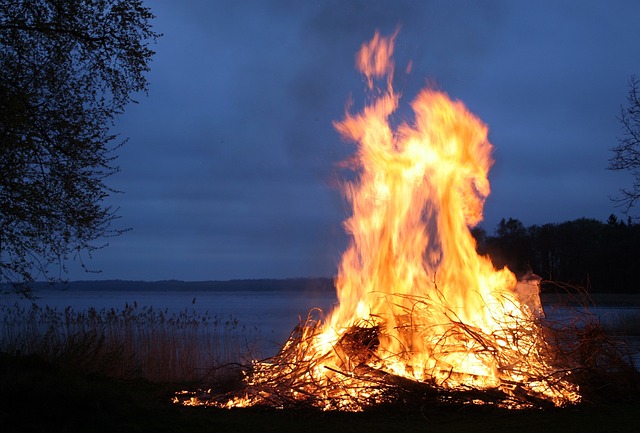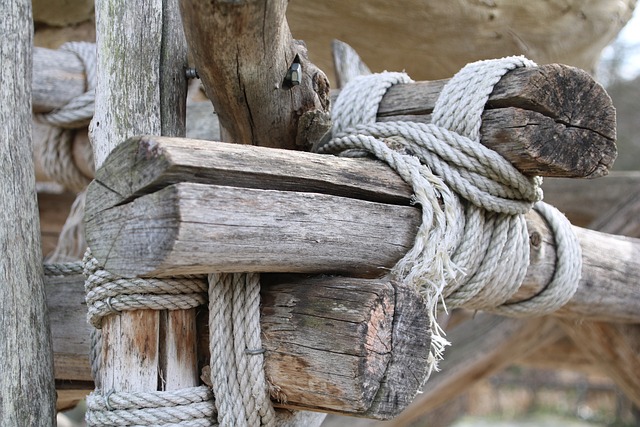The wilderness is a realm of both beauty and danger, where the line between adventure and adversity is often thin. To truly connect with nature and thrive in its midst, one must possess a comprehensive set of wilderness survival skills. Whether you’re an avid outdoor enthusiast looking to deepen your connection with the wild or someone who unexpectedly finds themselves stranded in nature, this detailed guide will equip you with the knowledge and techniques needed to not just survive, but thrive, in nature’s challenges.
1. Shelter Building: The Art of Wilderness Homes
Building a shelter is your first and foremost priority in the wilderness. Learn how to create various types of sturdy, weather-resistant shelters using natural materials and basic tools. Explore techniques such as:
- Lean-tos: Constructing a simple, sloped shelter using branches and leaves.
- Debris Huts: Building an insulated shelter with a framework of branches and a thatched covering.
- Tarp Shelters: Utilizing a tarp or plastic sheet to create quick, effective shelters.
- Snow Shelters: Crafting snow caves, igloos, or quinzees for winter survival.
Understanding shelter-building techniques is crucial for protecting yourself from the elements and maintaining body temperature in challenging environments.
2. Firecraft: Mastering the Flame

Fire is not just a source of warmth and light; it’s a fundamental survival tool. Master the art of fire-making, including various fire-starting methods:
- Friction-Based Techniques: Learn to create fire through methods like fire drills, fire bows, or hand drills.
- Fire Strikers: Explore the use of flint and steel, ferrocerium rods, and other fire striker tools.
- Solar Ignition: Understand how to harness sunlight using magnifying lenses or parabolic reflectors.
Fire provides comfort, a means to cook food, purify water, and serves as a psychological boost in survival situations.
3. Water Sourcing and Purification: Liquid Lifeline
Water is your most vital resource in the wilderness, but natural sources can be contaminated. Develop the skills to:
- Find Water: Identify signs of nearby water sources, such as animal tracks, green vegetation, or depressions in the terrain.
- Purification Techniques: Learn how to purify water through boiling, using purification tablets, or constructing improvised water filters.
- Hydration Strategies: Conserve and ration your water supply effectively to stay hydrated.
4. Foraging for Food: Nature’s Pantry
In the wild, food can be scarce, but it’s essential for energy and sustenance. Acquire the knowledge to:
- Identify Edible Plants: Recognize edible plants, berries, and nuts in your environment while avoiding toxic ones.
- Insect Harvesting: Overcome the “creepy-crawly” factor and learn how to collect and cook insects for protein.
- Trap Setting and Fishing: Set traps and snares to catch small game, and fashion improvised fishing gear.
Survival is not just about finding food but doing so sustainably to ensure your long-term well-being.
5. Navigation: Finding Your Way
Navigation is paramount in the wilderness, helping you avoid getting lost and enabling you to reach safety. Enhance your skills in:
- Map Reading: Interpret topographic maps, contour lines, and symbols to navigate unfamiliar terrain.
- Compass Use: Understand how to use a compass for basic navigation and orienteering.
- Celestial Navigation: Learn rudimentary celestial navigation using the sun, moon, and stars as reference points.
- Leave Markers: Use natural or man-made markers to create a trail and ensure you can retrace your steps if needed.
Accurate navigation can mean the difference between successfully reaching your destination and becoming disoriented in the wilderness.
6. First Aid and Wilderness Medicine: Treating Injuries and Illness
Accidents and injuries can happen in the wilderness. Equip yourself with essential first aid skills for treating injuries and illnesses:
- First Aid Kit: Create a wilderness first aid kit tailored to your needs, including items like bandages, antiseptics, and medications.
- Wound Care: Learn proper wound cleaning, dressing, and infection prevention techniques.
- Splinting and Immobilization: Understand how to immobilize fractures or sprains with improvised materials.
- Recognizing and Treating Hypothermia and Hyperthermia: Address temperature-related conditions effectively.
Wilderness first aid skills can save lives and alleviate suffering in challenging outdoor environments.
7. Signaling and Rescue Techniques: Getting Help When Needed
In case of an emergency, knowing how to signal for help is critical. Explore methods for alerting potential rescuers:
- Signaling Mirrors: Use reflective mirrors to catch and direct sunlight to a distant location.
- Smoke Signals: Create visible smoke signals using a controlled fire.
- Auditory Signals: Utilize whistles, horns, or improvised noise-makers to attract attention.
- Improvised Signals: Develop creative ways to convey distress messages, such as arranging rocks or using contrasting materials.
Effectively signaling for rescue can be a lifeline in dire situations.
8. Wildlife Awareness: Sharing Space with Nature

Understanding the behavior of wildlife is crucial for safety in the wilderness. Gain insights into:
- Animal Identification: Learn to identify local wildlife species and understand their habits.
- Minimizing Wildlife Encounters: Implement strategies to reduce the chances of close encounters with potentially dangerous animals.
- Safe Food Storage: Protect yourself and wildlife by properly storing food to prevent animal attraction.
Respecting the natural world and coexisting peacefully with wildlife is a fundamental aspect of wilderness survival.
9. Weather Forecasting: Nature’s Mood Ring
Being aware of weather patterns can help you make informed decisions about when to travel, seek shelter, or prepare for extreme conditions. Enhance your understanding of:
- Cloud Types: Recognize cloud formations as indicators of impending weather changes.
- Wind Patterns: Understand how wind direction and speed can foreshadow weather events.
- Natural Weather Forecasting Signs: Observe natural phenomena such as animal behavior or sky color changes to predict weather.
Weather awareness allows you to adapt to changing conditions and stay safe in the outdoors.
10. Mental Resilience: The Power of the Mind
Survival is not just about physical skills; it’s also about mental fortitude. Develop the psychological aspects of survival:
- Positive Mindset: Cultivate a positive outlook and maintain hope, even in challenging circumstances.
- Calm Under Pressure: Practice maintaining composure and making rational decisions in high-stress situations.
- Adaptability: Be ready to change your survival strategy based on the environment and evolving circumstances.
Your mental resilience can be your most potent survival asset, helping you overcome adversity in the wilderness.
11. Leave No Trace Principles: Ethical Wilderness Exploration
Respect for the wilderness is paramount. Follow Leave No Trace principles to minimize your environmental impact:
- Plan Ahead and Prepare: Thoroughly plan your trip, consider regulations, and be equipped for the conditions.
- Travel and Camp on Durable Surfaces: Stay on established trails and campsites to minimize damage to fragile ecosystems.
- Dispose of Waste Properly: Practice responsible waste disposal, including human waste and litter.
- Leave What You Find: Preserve natural and cultural features for future generations.
- Respect Wildlife: Observe animals from a distance, avoid feeding them, and minimize disruptions.
Leaving no trace ensures that others can enjoy the wilderness as you have.
12. Knot Tying: The Ties That Bind

Knot tying is a fundamental skill in the wilderness. Learn to tie various knots and their practical applications:
- Clove Hitch: Secure objects to a post or tree. A variation of this I really like is the two half hitch with a bight. These are great for creating ridgelines for tarps, with the bight making for an easy quick release.
- Bowline: Create a fixed loop at the end of a rope.
- Square Knot: For joining two ropes of equal diameter, or the double fisherman’s bend for heavier loads.
- Taut-Line Hitch: Adjust the tension of a line while under load.
Knots are essential for shelter building, crafting tools, and securing gear.
13. DIY Tools and Gear: Crafting the Essentials
In a survival situation, you may need to craft tools and gear from natural materials. Learn how to create:
- Cordage: Fashion strong, durable cordage from plant fibers or animal tendons.
- Containers: Craft containers for cooking, storing water, or collecting food.
- Improvised Weapons and Tools: Create basic tools and weapons for hunting and self-defense.
- Primitive Fishing Gear: Make hooks, lines, and traps to catch fish and aquatic life.
Adapting and creating what you need can be the key to survival in the wilderness.
14. Clothing and Insulation: Dressing for the Elements
Understanding clothing and insulation principles can help you stay warm and dry in challenging weather conditions. Explore:
- Layering: The importance of layering clothing to regulate body temperature.
- Insulating Materials: Types of insulation materials like down, synthetic fibers, and wool.
- Proper Footwear: Selecting appropriate footwear for different terrains and weather.
- Rain and Wind Protection: Using waterproof and windproof clothing to stay dry and shielded from the elements.
Staying comfortable and protected in the wilderness starts with proper attire.
15. Wildcrafting Skills: Crafting and Connecting with Nature
Enhance your wilderness experience by learning wildcrafting skills that connect you with nature on a deeper level:
- Herbal Medicine: Identify and use wild plants for medicinal purposes.
- Natural Dyes: Create dyes from plants and other natural sources for artistic and practical applications.
- Traditional Crafts: Explore traditional crafting techniques using natural materials found in the wilderness.
Wildcrafting allows you to not only survive but thrive in the wild while deepening your connection to the natural world.
Conclusion
Wilderness survival skills are not just for extreme situations; they are a gateway to a deeper connection with nature and self-reliance in the great outdoors. Whether you’re planning a backcountry adventure, exploring remote areas, or simply seeking to enhance your self-sufficiency, the knowledge and skills gained from this comprehensive guide will equip you to thrive in nature’s challenges. Explore, learn, and connect with the wild while ensuring your safety and well-being in the wilderness.



0 Comments